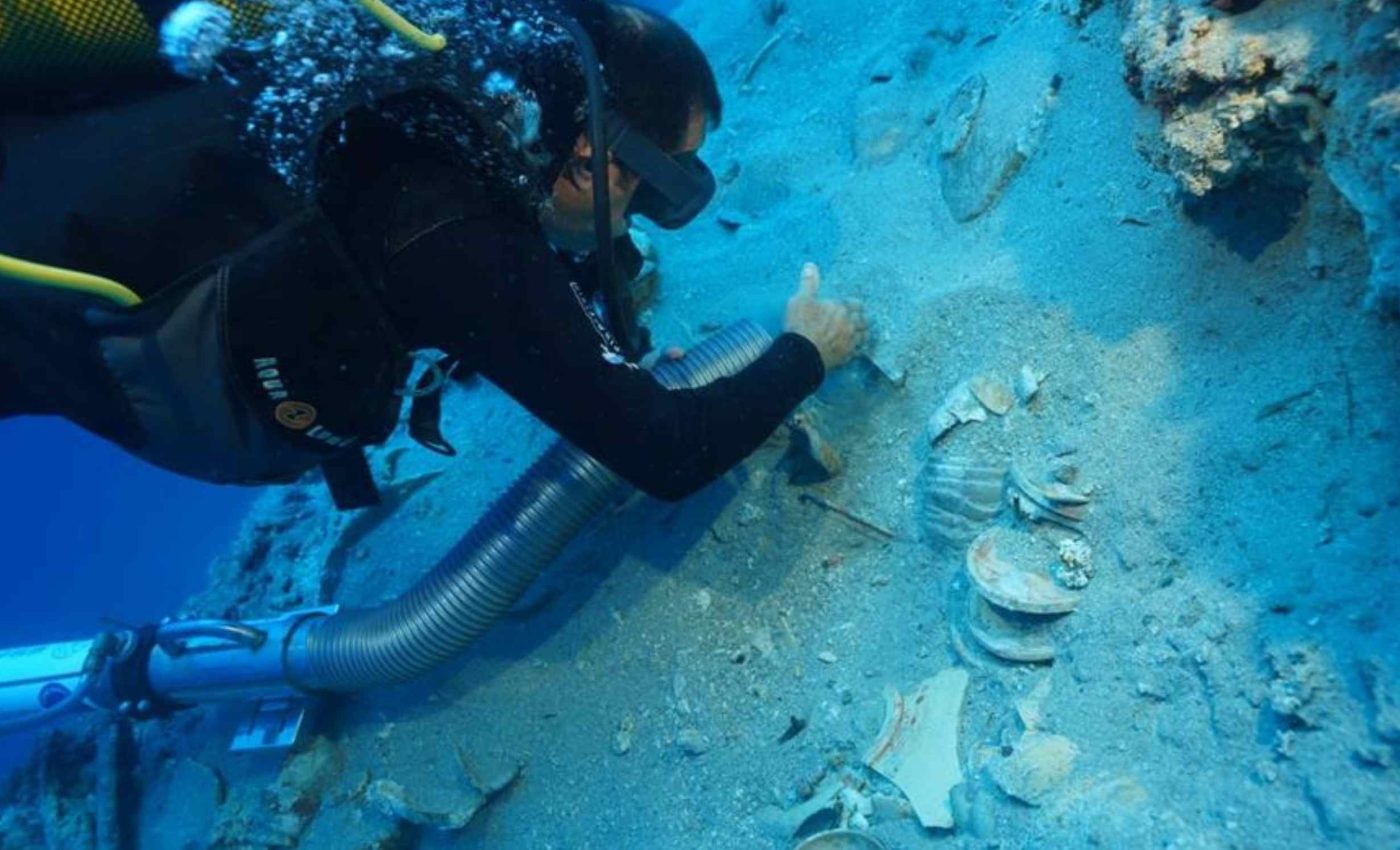
2,000-year-old shipwreck discovered with tableware in place
Divers working off Adrasan in Antalya, Turkey, located a shipwreck resting about 120 to 150 feet (35 to 45 meters) below the surface.
It was a cargo carrier and its hold was packed with ceramic plates, trays, and bowls. The tableware was still arranged in tidy stacks as though waiting to be delivered.
The depth, age, and condition of the cargo together suggest a Late Hellenistic to Early Roman date and a rare chance to study daily life through ordinary objects.
The excavation team noted that many of the ceramics have kept their original colors and surface textures, which is unusual for long submersion in seawater.
Conservation labs are documenting the pieces in detail to capture manufacturing marks, slips, and painted motifs.
What the tableware stacks reveal
Dr. Hakan Öniz of Akdeniz University led the scientific work at the site; he coordinated divers, surveyed, and handled the artifacts.
His group is experienced in underwater archaeology, which explores and preserves human history found beneath lakes and seas.
The ceramic cargo aligns with Eastern, which is a fine, red-slipped tableware widely traded in the eastern Mediterranean during the first century BCE and the first century CE.
Specialists use this ware to track production hubs near Antioch and to date shipwrecks tied to coastal trade.
A mapped entry for the Adrasan Plate Wreck records that the cargo consists almost entirely of Eastern Sigillata A forms, mainly plates, cups, and bowls, with little else besides the stacks.
The site’s description places the wreck near 45 meters, or about 148 feet, and dates the material to the first century BCE.
Uniform cargo tells a story about commerce, not ceremony. Merchants moved standardized tableware in bulk because buyers wanted familiar shapes, sizes, and finishes that fit the dining habits of the time.
Shipwreck ceramics and map preserved
Team members report a thin coat of raw clay applied to the exterior of many vessels before loading.
That simple step acted as a sacrificial layer that blunted abrasion during transport and, later, slowed marine wear on exposed surfaces.
Once on the seafloor, stacks cushioned by clay and sand created small pockets with less water flow and fewer organisms.
Those calmer microenvironments helped preserve slips, gloss, and tool marks that usually vanish after centuries underwater.
Ceramic specialists read trade like a ledger. When a cargo is dominated by a single ware, they can tie the batch to known workshops, estimate shipping routes, and compare rim and base variants to dated sequences.
Because Eastern Sigillata A production began in the Antioch region, links between Adrasan and that coast make sense for short-hop voyages along the south Anatolian shore.
The standardized forms also make it easier to see how tastes spread, since shape catalogs changed over time in ways that archaeologists can measure.
From shipwreck to museum
The finds will eventually join displays with other shipwreck collections, including galleries at the Bodrum Museum of Underwater Archaeology.
This institution is housed in the medieval castle and focused on submerged cultural heritage. Exhibition designers often present cargo groups intact so visitors can see how goods were packed and protected.
Plans are underway for a new Mediterranean Underwater Archaeology Museum in the Kemer Idyros region.
This would be designed to display the Adrasan shipwreck artifacts alongside other discoveries from Turkey’s southern coast.
The initiative follows reports of more than 400 shipwrecks identified between Patara and Mersin. Such a density emphasizes the considerable maritime heritage in the eastern Mediterranean.
The project also includes year-round conservation efforts and the development of new exhibition spaces in Antalya.
This marks a coordinated effort to link archaeological research with public engagement and cultural tourism.
Deciphering everyday tableware
A cargo full of plates and bowls might sound plain, but tableware carries fine-grained clues.
Rim angles, foot rings, slip thickness, and turning lines record workshop habits that changed with fashion and technology.
When a shipwreck is dominated by one ware family, those small details become powerful.
Researchers can pin down dates to decades rather than centuries, which is why this kind of cargo is prized for building regional timelines.
Nested stacks show how shippers maximized space and kept loads from shifting in a swell.
The raw clay coating suggests crew took extra steps to prevent chipping in transit and scuffing during loading through surf or against a quay.
Once the ship went down, the very features meant to protect the cargo in transit became a shield on the bottom. Sand infill and clay crusts sealed motifs and slips that now read like fresh impressions.
Why the Adrasan Plate shipwreck matters
For a high school lab, these dishes are a direct line to questions about production, standards, and markets.
Students can compare forms and think about how a shop keeps quality consistent when making thousands of near-identical plates.
For visitors, seeing the tableware stacks in a museum offers a clear look at daily life two millennia ago. These are not royal gifts or ritual vessels.
Instead, they are household goods that fed families, and that human connection lands with unusual clarity.
A recent paper on the Adrasan Plate Wreck details the forms and dates within the Eastern Sigillata A family, tying this coast to larger eastern Mediterranean trade.
That study underscores how standardized tableware can anchor chronologies across multiple ports.
As conservation proceeds, researchers will sample clays and slips to pinpoint production recipes and, by extension, workshop locations.
Those lab results will refine the route map and give teachers and curators fresh material for lessons and labels.
Information from a Turkish Ministry of Culture and Tourism press release.
—–
Like what you read? Subscribe to our newsletter for engaging articles, exclusive content, and the latest updates.
Check us out on EarthSnap, a free app brought to you by Eric Ralls and Earth.com.
—–













